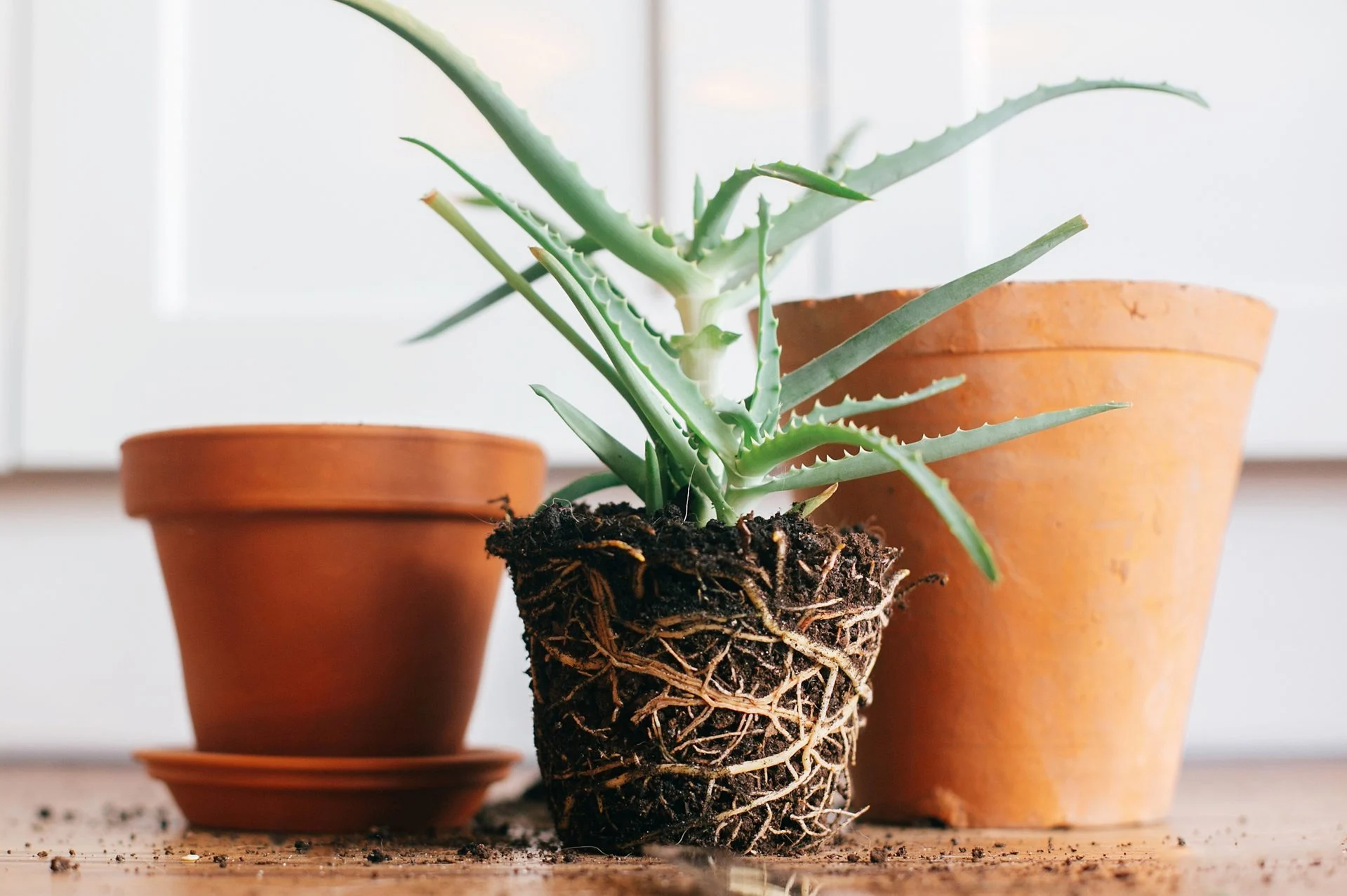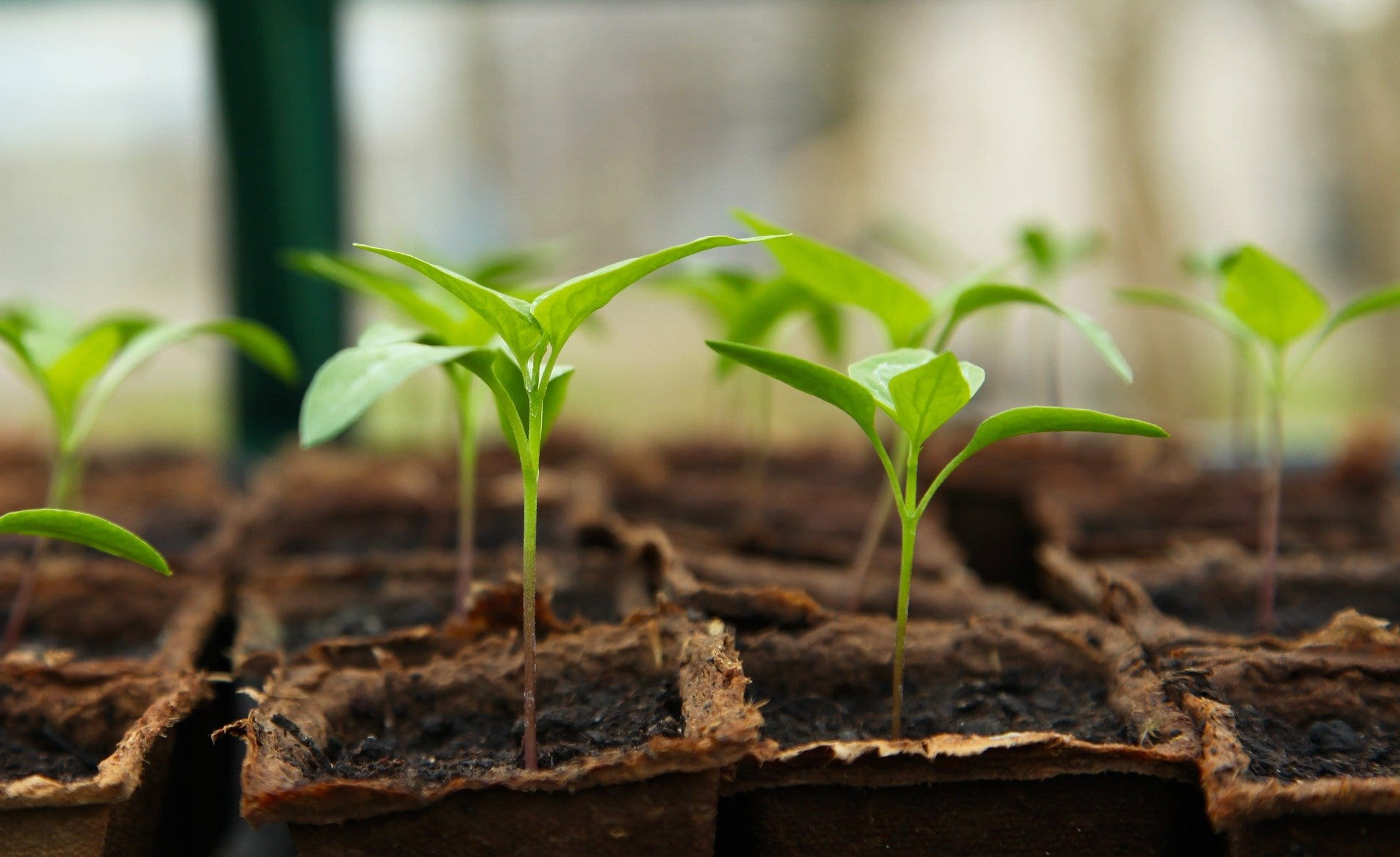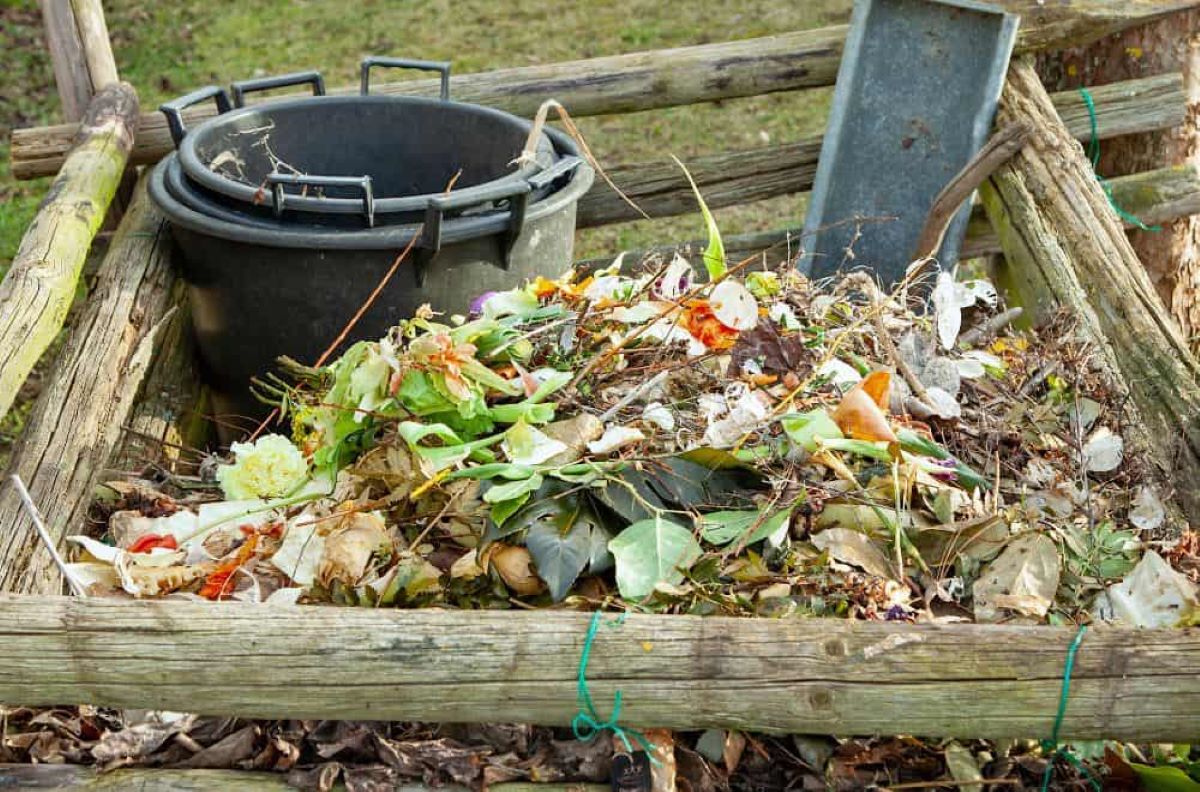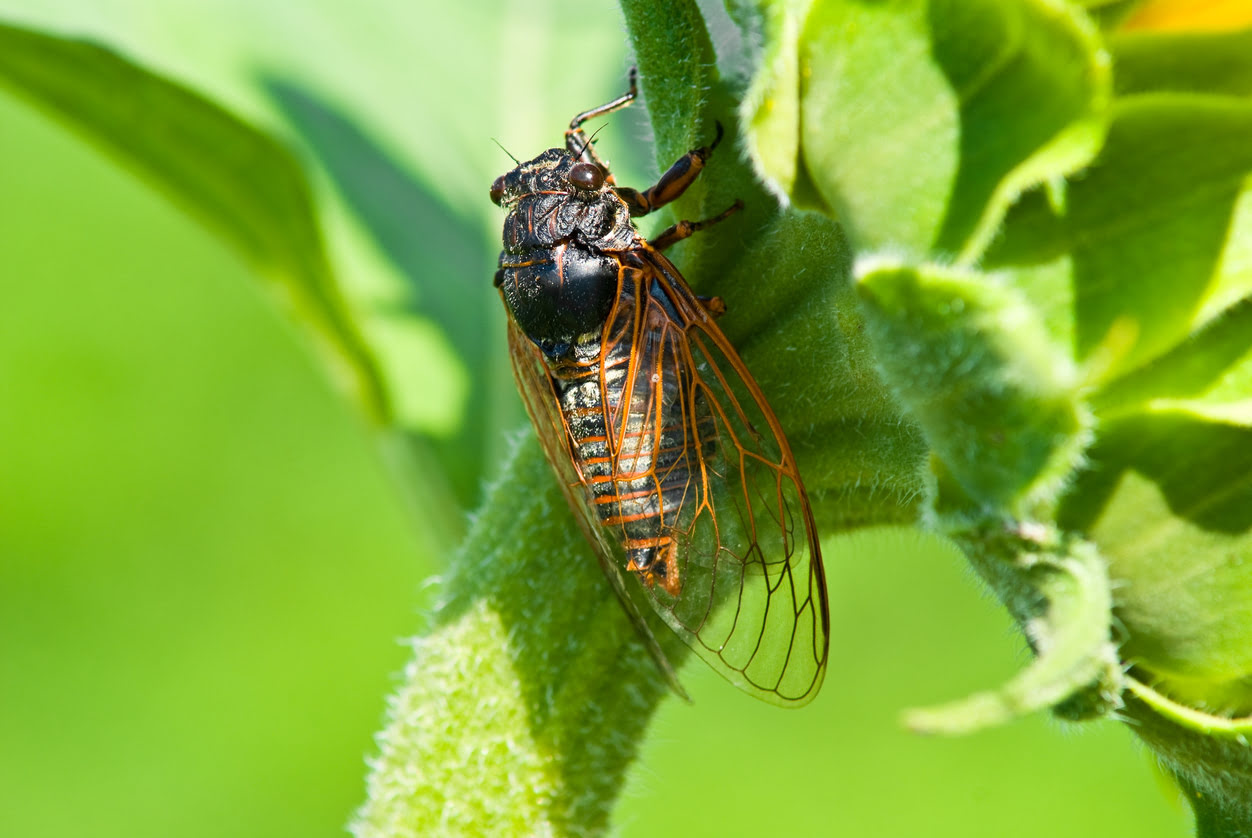Home>Gardening Basics>Understanding Soil>How Long Does Roundup Stay In The Soil


Understanding Soil
How Long Does Roundup Stay In The Soil
Published: February 5, 2024
Discover how long Roundup stays in the soil and its impact on the environment and understanding soil. Learn more about soil contamination and ways to mitigate its effects.
(Many of the links in this article redirect to a specific reviewed product. Your purchase of these products through affiliate links helps to generate commission for Chicagolandgardening.com, at no extra cost. Learn more)
Table of Contents
- Introduction
- Understanding Roundup and its Persistence in the Soil
- Factors Affecting Roundup Persistence in the Soil
- Environmental Impact of Roundup Residuals in Soil
- Health Concerns Associated with Roundup Residues in Soil
- Measuring Roundup Persistence in Soil
- Strategies for Reducing Roundup Residue in Soil
- Conclusion
Introduction
Welcome to our comprehensive guide on understanding the persistence of Roundup in the soil. Roundup, also known as glyphosate, is a widely-used herbicide that has been utilized for decades to control weeds in various agricultural, residential, and commercial settings. As an SEO expert with a deep understanding of soil, we will explore the factors that influence Roundup’s persistence in the soil, its environmental impact, health concerns associated with its residues, methods for measuring its persistence, and strategies to reduce its presence in the soil.
Roundup has gained popularity due to its effectiveness in eliminating unwanted plant growth. However, concerns have arisen regarding its potential impact on the environment and human health. Understanding how long Roundup stays in the soil is crucial to ensure the sustainability of agricultural practices, protect ecosystems, and safeguard human well-being.
Throughout this article, we will delve into the science behind Roundup’s persistence in the soil and delve into the various factors that contribute to its longevity. By doing so, we aim to equip readers with the knowledge needed to make informed decisions about the use of Roundup and develop strategies for mitigating its impact on soil health.
We will explore the environmental implications of Roundup residues in the soil, including their potential to contaminate surface and groundwater. Additionally, we will discuss the health concerns associated with residual Roundup in soil, exploring the potential for it to leach into crops and affect human health through consumption or direct contact exposure.
Furthermore, we will outline the methods used to measure Roundup’s persistence in the soil. These techniques enable researchers and farmers to assess the duration of Roundup’s presence, allowing for more informed decision making regarding planting timelines, crop rotation strategies, and overall soil management practices.
Lastly, we will discuss strategies for reducing Roundup residues in the soil. These methods range from alternative weed control practices to enhancing soil health through organic matter management, crop diversity, and biological controls.
By the end of this comprehensive guide, you will have a thorough understanding of Roundup’s persistence in the soil and be equipped with practical knowledge to minimize its impact on soil health and the environment. So, let’s dive in and explore the fascinating world of Roundup and its interactions with the soil.
Understanding Roundup and its Persistence in the Soil
Before we dive into the factors that affect the persistence of Roundup in the soil, let’s first understand what Roundup is and why it is widely used. Roundup is a systemic herbicide containing the active ingredient glyphosate. It is designed to target and eliminate a broad range of weeds that compete with crops for resources such as water, nutrients, and sunlight.
When Roundup is sprayed onto plants, it is absorbed by the foliage and transported throughout the plant, eventually reaching the roots. This systemic action makes Roundup highly effective in eradicating unwanted plant growth.
But what happens to Roundup once it enters the soil? The persistence of Roundup in the soil refers to the duration of time it remains active or detectable after application. The degree of persistence can vary depending on several factors, including soil characteristics, environmental conditions, and the application rate and method.
One of the key factors influencing Roundup’s persistence in the soil is soil type. Different soil types have varying levels of organic matter, clay content, and microbial activity, all of which can affect how quickly or slowly Roundup degrades. For example, sandy soils with low organic matter content tend to have lower binding capacity for Roundup, potentially leading to higher leaching and runoff.
Environmental conditions such as temperature, moisture, and sunlight exposure also play a role in Roundup’s persistence. Higher temperatures and intense sunlight can enhance microbial degradation and break down Roundup more quickly. Conversely, cool and wet conditions may slow down the degradation process, prolonging Roundup’s presence in the soil.
Furthermore, the application rate and method of Roundup can influence its persistence in the soil. Higher application rates can result in higher initial concentrations of Roundup, which may take longer to break down. Additionally, the method of application, whether it’s spraying or soil incorporation, can affect how deeply Roundup penetrates the soil and its subsequent degradation.
Now that we have a foundational understanding of Roundup and its persistence in the soil, we can explore the various factors that affect its longevity. By understanding these factors, we can make informed decisions and develop strategies to mitigate any potential negative impacts on soil health and the environment.
Factors Affecting Roundup Persistence in the Soil
Several factors influence the persistence of Roundup in the soil, including soil characteristics, environmental conditions, application rate, and microbial activity. Understanding these factors is crucial for managing Roundup residues and minimizing their potential impacts on soil health and the environment.
Soil Characteristics: The properties of the soil, such as organic matter content, clay content, and pH, can affect the persistence of Roundup. Soils with higher organic matter content have increased microbial activity, which can enhance the breakdown of Roundup. Additionally, clay soils have a higher binding capacity, potentially reducing the leaching of Roundup into groundwater. The pH of the soil also plays a role, with neutral to slightly acidic soils generally facilitating the degradation of Roundup.
Environmental Conditions: Environmental factors like temperature, moisture, and sunlight exposure can influence Roundup’s persistence in the soil. Higher temperatures can accelerate microbial activity, leading to more rapid degradation of Roundup. Conversely, cooler temperatures can slow down the breakdown process. Moisture levels in the soil also play a role, with excessive rainfall or irrigation potentially promoting leaching and runoff of Roundup. Sunlight exposure can facilitate the photodegradation of Roundup, especially on soil surfaces.
Application Rate and Method: The rate at which Roundup is applied can impact its persistence in the soil. Higher application rates can result in higher initial concentrations of Roundup, which may take longer to degrade. The method of application, such as spraying or soil incorporation, can also affect Roundup’s persistence. Spraying exposes Roundup to sunlight and air, potentially accelerating its breakdown. Soil incorporation can lead to deeper penetration of Roundup into the soil, influencing its persistence and potential for leaching.
Microbial Activity: Microbes play a critical role in the degradation of Roundup in the soil. Soil microorganisms, such as bacteria and fungi, can break down Roundup into less harmful substances through various metabolic processes. However, the availability of nutrients and organic matter in the soil can impact microbial activity and, subsequently, the degradation rate of Roundup.
It is essential to consider these factors when using Roundup and managing its residues in the soil. By understanding the interplay between soil characteristics, environmental conditions, application practices, and microbial activity, we can make informed decisions to minimize Roundup’s persistence and potential impact on the ecosystem.
Environmental Impact of Roundup Residuals in Soil
The presence of Roundup residuals in the soil can have various environmental implications, as it can potentially contaminate groundwater, impact non-target plants and organisms, and contribute to the development of herbicide-resistant weeds.
One of the primary concerns is the potential leaching of Roundup into groundwater. When Roundup is applied to the soil, it can infiltrate through the soil profile and reach the water table, thereby contaminating groundwater resources. This can have detrimental effects on drinking water sources and aquatic ecosystems, as glyphosate has been found to be toxic to certain aquatic organisms.
Roundup residues in the soil can also have unintended consequences for non-target plants. Due to its broad-spectrum nature, Roundup can inadvertently affect desirable plants and vegetation around the application area. This can disrupt natural habitats, impact biodiversity, and reduce food and shelter resources for wildlife. Additionally, repeated and excessive use of Roundup can lead to the development of herbicide-resistant weeds, which can further complicate weed management strategies and necessitate the use of stronger herbicides.
Furthermore, the persistence of Roundup residues in the soil can affect soil microorganisms and nutrient cycling processes. Microbes play crucial roles in soil fertility, decomposition, and nutrient cycling. High concentrations of Roundup can disrupt the balance of the soil microbiome, potentially impacting the availability of essential nutrients for plants and soil organisms.
It is important to note that the environmental impact of Roundup in the soil is context-dependent and can vary based on factors such as application rate, frequency of use, proximity to sensitive areas, and overall land management practices. Implementing responsible and sustainable herbicide application practices, including following label instructions, considering alternative weed control methods, and employing integrated pest management strategies, can help mitigate the potential environmental consequences of Roundup residues in the soil.
In summary, Roundup residuals in the soil can pose environmental risks by potentially contaminating groundwater, impacting non-target plants and organisms, and contributing to the development of herbicide-resistant weeds. Understanding and managing these impacts are essential for promoting sustainable agriculture and protecting the health of ecosystems.
Health Concerns Associated with Roundup Residues in Soil
The presence of Roundup residues in the soil can raise health concerns, particularly regarding their potential effects on human health through direct exposure or consumption of crops grown in contaminated soil.
One of the primary health concerns is the potential for Roundup to leach into groundwater and contaminate drinking water sources. If groundwater is contaminated with glyphosate, it can pose a risk to human health when consumed. Studies have suggested a possible link between exposure to glyphosate and various health issues, including certain types of cancers, reproductive disorders, and disruption of the endocrine system.
Another pathway for human exposure is through direct contact with soil that contains Roundup residues. Workers or individuals who regularly come into contact with contaminated soil, such as farmers or gardeners, may face a higher risk. Although the level of risk depends on various factors, including the concentration of Roundup residues and the duration and frequency of exposure, it is essential to implement proper safety measures, such as wearing protective clothing and gloves, when handling or working with potentially contaminated soil.
Crops grown in soil with Roundup residues can also introduce the herbicide into the food chain. If plants take up Roundup from the soil, it can accumulate in their tissues, potentially leading to exposure when consumed. Although regulatory agencies set maximum residue limits (MRLs) for glyphosate in food products, concerns have been raised about the potential long-term effects of chronic low-level exposure.
Additionally, exposure to Roundup residues in the soil may have indirect health impacts through the disruption of soil microorganisms. Soil microorganisms play crucial roles in nutrient cycling, soil fertility, and plant health. Any disruption in the soil microbiome caused by Roundup residues could affect soil health, plant growth, and potentially impact human nutrition by altering nutrient availability in crops.
It is important to note that the potential health effects of Roundup residues in soil are still a subject of debate among scientists and regulatory authorities. Ongoing research is aiming to further understand the risks and establish clear guidelines for safe exposure levels.
In the meantime, it is advisable to practice caution and implement strategies to minimize exposure to Roundup residues in the soil. This can include avoiding direct contact with potentially contaminated soil, practicing good hygiene when working with soil, and sourcing food from reliable sources that adhere to rigorous safety standards.
In summary, Roundup residues in the soil may pose health concerns through potential direct exposure, groundwater contamination, and contamination of food crops. While the extent of the risks is still under investigation, it is important to adopt precautionary measures to minimize exposure and stay informed about the latest research in this area.
Measuring Roundup Persistence in Soil
Measuring the persistence of Roundup in soil is crucial for understanding its behavior and potential impact on the environment. Several methods and techniques are employed to assess the presence and degradation of Roundup residues in soil.
One commonly used method is analytical chemistry. This involves extracting Roundup from soil samples and analyzing it using techniques such as gas chromatography or liquid chromatography coupled with mass spectrometry. These methods can detect and quantify the concentration of Roundup and its breakdown products, providing valuable information about its presence in soil over time.
In addition to chemical analysis, biological methods are also employed to assess Roundup persistence in the soil. Microbial activity assays can indicate the degradation potential of Roundup, as microbial populations play a key role in breaking down this herbicide. These assays measure carbon dioxide production, soil respiration, or microbial biomass, offering insights into the degradation capabilities of the soil microbial community.
Furthermore, field studies are conducted to evaluate the persistence of Roundup in real-world conditions. These studies involve monitoring Roundup residues in soil over extended periods, considering factors such as application rate, soil type, climate, and management practices. By collecting and analyzing soil samples from treated areas over time, researchers can determine the longevity of Roundup residues and assess the effectiveness of degradation processes in the field.
It is worth noting that the persistence of Roundup in the soil can vary depending on several factors, as discussed earlier. Therefore, a combination of laboratory-based studies, field trials, and modeling approaches is often used to gain a comprehensive understanding of Roundup persistence in diverse soil environments.
By measuring Roundup persistence in soil, scientists can determine the effectiveness of different management strategies. This knowledge is valuable for developing guidelines and best practices to minimize the presence of Roundup residues and reduce potential environmental and health risks.
Continued research and advancements in analytical techniques will further refine our ability to measure Roundup persistence in the soil and provide accurate data for making informed decisions regarding its use and impact on soil health.
In summary, measuring Roundup persistence in the soil involves chemical analysis, biological methods, and field studies. These techniques provide crucial insights into the longevity of Roundup residues in different soil environments and contribute to the development of effective soil management strategies.
Strategies for Reducing Roundup Residue in Soil
Reducing Roundup residue in soil is crucial for minimizing the potential environmental and health impacts associated with this herbicide. Implementing alternative weed control practices and adopting sustainable soil management strategies can help mitigate Roundup residues in the soil. Here are some strategies to consider:
- Integrated Pest Management (IPM): Adopting an IPM approach involves combining multiple weed control methods, such as cultural, mechanical, and biological controls, to reduce reliance on herbicides like Roundup. This approach includes practices like crop rotation, mulching, hand weeding, and the use of beneficial insects to control weed populations.
- Targeted Spot Spraying: Rather than blanket spraying entire areas, employing targeted spot spraying can help minimize Roundup use. This involves identifying and specifically treating individual weeds or weed patches, reducing the overall amount of herbicide applied to the soil.
- Physical Weed Control: Utilizing mechanical methods, such as hoeing, mowing, or flame weeding, can effectively control weeds without relying solely on herbicides. These methods physically remove or disrupt weed growth, reducing the need for Roundup application.
- Crop Rotation and Cover Crops: Implementing crop rotation practices can help disrupt weed life cycles, reducing the need for herbicide application. Cover crops, grown during fallow periods, can provide weed suppression, improve soil health, and reduce soil erosion, reducing the overall reliance on Roundup for weed control.
- Enhancing Soil Health: Fostering a healthy soil ecosystem can help reduce weed competition and improve overall crop resilience. Practices such as adding organic matter, practicing proper nutrient management, and promoting beneficial soil microorganisms can enhance soil health, which, in turn, reduces the need for excessive herbicide use.
- Educating and Training: Providing education and training for farmers, landscapers, and gardeners on sustainable weed management practices is essential for reducing Roundup residue in the soil. By raising awareness about alternative methods and their benefits, individuals can make informed choices and understand the long-term implications of using Roundup.
It is important to emphasize that each farming or gardening situation is unique, and the most effective strategies for reducing Roundup residue may vary. It is crucial to consider factors such as weed species, soil type, climate, and crop rotation schedules when choosing the most suitable strategies for a specific situation.
By adopting these strategies and integrating them into a comprehensive approach, farmers, landscapers, and gardeners can reduce their reliance on Roundup and minimize its residue in the soil. This not only promotes sustainable and environmentally friendly practices but also contributes to the long-term health and productivity of the soil.
Conclusion
Understanding the persistence of Roundup in soil is crucial for promoting sustainable agriculture, protecting the environment, and ensuring human health and safety. Throughout this comprehensive guide, we have explored various aspects of Roundup residues in soil, including its persistence factors, environmental impact, health concerns, measurement methods, and strategies for reduction.
We have learned that soil characteristics, environmental conditions, application practices, and microbial activity all play significant roles in the persistence of Roundup in the soil. By considering these factors, farmers, landscapers, and gardeners can make informed decisions and implement strategies to minimize Roundup residue and its potential impact on soil health and the environment.
Roundup residues in the soil can have environmental consequences, including potential contamination of groundwater, impacts on non-target plants and organisms, and the development of herbicide-resistant weeds. Additionally, health concerns arise from direct exposure to Roundup or consumption of crops grown in contaminated soil. It is crucial to follow safety measures and stay informed about the latest research regarding the potential risks associated with Roundup residues.
Efficiently measuring Roundup persistence in soil relies on analytical chemistry, biological methods, and field studies. These techniques provide valuable insights into the presence and breakdown of Roundup residues, enabling the development of effective soil management strategies.
By implementing strategies such as integrated pest management, targeted spot spraying, physical weed control, crop rotation, enhancing soil health, and providing education and training, we can work towards reducing Roundup residue in soil. These methods promote sustainable agriculture, minimize the use of herbicides, and protect the long-term health and productivity of the soil.
In conclusion, understanding and managing Roundup residues in soil requires a holistic approach that considers multiple factors. By implementing sustainable weed control practices and promoting soil health, we can minimize Roundup residue, protect the environment, and prioritize the well-being of both our ecosystems and ourselves.







